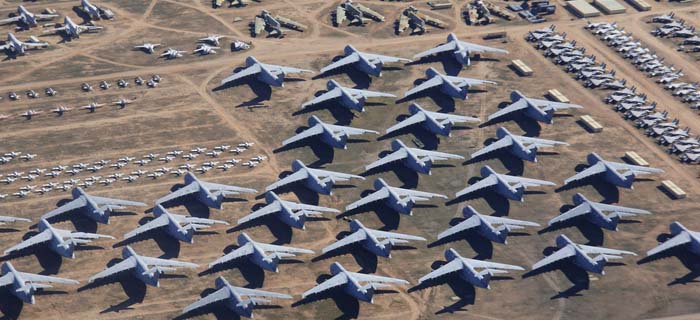Air Force Veterans
Many U.S. Air Force veterans have been exposed to asbestos in military bases and aircraft. Air Force veterans with mesothelioma can receive disability compensation and free cancer treatment if they file a VA claim to have their cancer recognized as service connected.
Asbestos.com is the nation’smost trustedmesothelioma resource
The Mesothelioma Center at Asbestos.com has provided patients and their loved ones the most updated and reliable information on mesothelioma and asbestos exposure since 2006.
我们的团队的病人倡导者包括医疗doctor, a registered nurse, health services administrators, veterans, VA-accredited Claims Agents, an oncology patient navigator and hospice care expert. Their combined expertise means we help any mesothelioma patient or loved one through every step of their cancer journey.
More than 30 contributors, including mesothelioma doctors, survivors, health care professionals and other experts, have peer-reviewed our website and written unique research-driven articles to ensure you get the highest-quality medical and health information.
About The Mesothelioma Center at Asbestos.com
- Assisting mesothelioma patients and their loved ones since 2006.
- Helps more than 50% of mesothelioma patients diagnosed annually in the U.S.
- A+ rating from the Better Business Bureau.
- 5-star reviewed mesothelioma and support organization.
Testimonials
My family has only the highest compliment for the assistance and support that we received from The Mesothelioma Center. This is a staff of compassionate and knowledgeable individuals who respect what your family is experiencing and who go the extra mile to make an unfortunate diagnosis less stressful. Information and assistance were provided by The Mesothelioma Center at no cost to our family.LashawnMesothelioma patient’s daughter
How to Cite Asbestos.com’s Article
APA
Munz, A. (2023, October 5).Air Force Veterans.Asbestos.com. Retrieved October 11, 2023, from //www.magnakarsa.com/veterans/air-force/
MLA
Munz, Aaron. "Air Force Veterans."Asbestos.com, 5 Oct 2023, //www.magnakarsa.com/veterans/air-force/.
Chicago
Munz, Aaron. "Air Force Veterans." Asbestos.com. Last modified October 5, 2023. //www.magnakarsa.com/veterans/air-force/.
Benefits for Air Force Veterans with Mesothelioma
Air Force veterans can receive special VA benefits if they develop an illness caused by military asbestos exposure. If their condition is not service connected, they may still be able to access low-cost VA health care and file for other types of compensation.
The U.S. Air Force has gone to great lengths in recent years to guard against asbestos exposure. But veterans remain at risk of developingmesotheliomabecause of the Air Force’s extensive use of the toxic mineral from the 1940s to the 1970s.
It can take anywhere from 20 to 60 years for asbestos exposure to cause cancer. This long latency period makes filing for VA benefits based on asbestos exposure a complex process.
OurVeterans Departmentis staffed with accredited VA claims agents who can help veterans prepare a written asbestos exposure summary and gather the necessary medical records. Understanding the requirements for proving military asbestos exposure is the key to filing a successful VA claim.
Compensation for Air Force Asbestos Exposure
An approvedmesothelioma VA claimgrants veterans the maximum amount of monthly disability compensation for their family size. Dependency and indemnity compensation is available to surviving spouses of veterans who die from service-connected cancer.
It is also wise to consult anexperienced mesothelioma lawyerabout filing a claim against the private companies that supplied asbestos products to the Air Force.
Filing a legal claim can allow military families to recover lost income, caregiving expenses and other costs not covered by veterans benefits.

Asbestos Exposure in the Air Force
The U.S. military once valued asbestos products for their heat resistance, durability and affordability. Like the otherbranches of the U.S. military, the Air Force ignored the health risks of asbestos exposure until the 1970s, giving it a long history of asbestos use in bases, radar stations and aircraft.
Examples of Asbestos Found on Air Force Bases
- The U.S. Environmental Protection Agency removed asbestos from the former Burns Air Force Radar Base in 2004. During the cleanup effort, they had to safely dispose of 377.5 tons of asbestos-containing materials, including insulation, pipe wrap, tiles and wallboard.
- In 2009, the Air Force paid for the removal of 6,000 feet of above-ground asbestos-coated steam pipeline at the former Chanute Air Force Base.
- In 2016, an Asia-Pacific Journal report highlighted the extensive history of asbestos exposure hazards at Kadena Air Base, the largest U.S. Air Force installation in Asia. Years of lax safety standards endangered service members, military families and civilian contractors.
In the 1980s, the Air Force began replacing asbestos-containing parts on aircraft with safer substitutes. More recently, the Secretary of the Air Force created strict guidelines for dealing with asbestos, detailed in an asbestos management document distributed in December 2014.

Air Force Occupations at Risk
Several Air Force occupations put service members at risk forasbestos exposure. Asbestos materials were used to build aircraft, and service members may have also been exposed to asbestos materials used in the construction of Air Force bases.
Air Force Occupations at Risk of Asbestos Exposure
- Aircraft electricians
- Aircraft mechanics
- Boiler workers
- Construction workers
- Environmental support specialists
- Firefighters
- Vehicle mechanics
- Welders
Civilian contractors and subcontractors who performed work at Air Force bases were also exposed to asbestos. At-risk jobs include construction work, electrical work, asbestos abatement and boiler maintenance.
Air Force firefighters were particularly at risk of exposure because they used to wear asbestos-containing personal protective equipment. They also responded to fires where asbestos products were prevalent, including aircraft fires and building fires in boiler rooms.

Asbestos on Planes
Asbestos was used in the building and maintenance of aircraft, primarily to protect against fire and heat. Air Force mechanics were at risk of inhaling airborne asbestos fibers while working with engines and other vehicle parts.
Air Force mechanics could encounter asbestos in:
- Brakes
- Cargo bay insulation
- Cockpit heating systems
- Electrical wiring insulation
- Engine heat shields
- Gaskets
- Torque valves
Air Force service members often used asbestos to solve mechanical problems. For example, former Technical Sergeant Tony Ventura described how he developed a solution for the long-standing problem of oil leaks in the B-29 bomber engine.
My suggestion was to wrap the 36 hose fittings on each engine with metallic inserted asbestos. This piece of asbestos would act as a heat baffle. The cost per cylinder would be about 50 cents. I experimented with one cylinder to see if these 50 cents would save a very expensive engine. The engineering officers and officials from Wright Engine Company were ecstatic when the cylinder was found to be bone dry after the test flight.Tony VenturaWWII Veteran Technical Sergeant
Manufacturers That Supplied Asbestos
Legal documents show multiple asbestos manufacturers supplied asbestos-containing materials to the Air Force.
Companies that supplied asbestos to the Air Force include:
- Bendix
- Cleaver Brooks
- Fairchild-Republic
- General Electric Company
- Johns-Manville
- Owens-Corning Fiberglass
- Pratt & Whitney
- Raytheon
- United Technologies
Most of these companies produced asbestos-containing gaskets and insulation for aircrafts. Others manufactured asbestos pipes, boilers and construction materials commonly used in Air Force bases.
The Department of Justice announced in June 2021that two former employees of the U.S. military’s largest private landlord contractors pleaded guilty to fraud for covering up asbestos contamination and other hazards at several Air Force bases.
In May 2020, the U.S. Defense Department’s Inspector General issued a report on military housing units and found 38,000 contained hazardous substances such as asbestos or lead. Asbestos exposure remains a concern at many Air Force bases in the U.S. and overseas.









